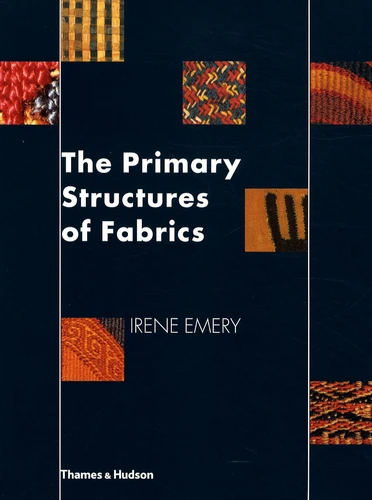The primary structures of fabrics. An illustrated Classification
Par :Formats :
Définitivement indisponible
Cet article ne peut plus être commandé sur notre site (ouvrage épuisé ou plus commercialisé). Il se peut néanmoins que l'éditeur imprime une nouvelle édition de cet ouvrage à l'avenir. Nous vous invitons donc à revenir périodiquement sur notre site.
- Nombre de pages341
- PrésentationBroché
- Poids1.64 kg
- Dimensions23,0 cm × 30,0 cm × 2,5 cm
- ISBN978-0-500-28802-3
- EAN9780500288023
- Date de parution23/04/2009
- ÉditeurThames & Hudson
Résumé
Irene Emery's innovative construction of a comprehensive system of terminology for describing fabrics was recognized as a classic on the first publication in 1966. Based on years of study of a huge range of fabrics produced by hand or by strictly limited mechanization, its essential strength is its universality; whether the purpose of study is an aspect of design, history or cultural significance and whatever its scope chronologically or geographically, a definition of the actual structural makeup of fabrics and their component parts becomes clear and accessible to all.
In this monumental work, the structures of fabrics and the descriptive terms applied to them are clearly presented according to their logical relationships to each other, moving from the simplest to the most complex. Illustrated both with specially constructed and photographed examples and with extant fabrics from different cultures, the book is divided into three parts: the raw materials of fabric structures (filaments and fabric elements); the fabric structures themselves, whether felted or made from interworked yarns; and structures such as stitches or appliqué.
In this monumental work, the structures of fabrics and the descriptive terms applied to them are clearly presented according to their logical relationships to each other, moving from the simplest to the most complex. Illustrated both with specially constructed and photographed examples and with extant fabrics from different cultures, the book is divided into three parts: the raw materials of fabric structures (filaments and fabric elements); the fabric structures themselves, whether felted or made from interworked yarns; and structures such as stitches or appliqué.
Irene Emery's innovative construction of a comprehensive system of terminology for describing fabrics was recognized as a classic on the first publication in 1966. Based on years of study of a huge range of fabrics produced by hand or by strictly limited mechanization, its essential strength is its universality; whether the purpose of study is an aspect of design, history or cultural significance and whatever its scope chronologically or geographically, a definition of the actual structural makeup of fabrics and their component parts becomes clear and accessible to all.
In this monumental work, the structures of fabrics and the descriptive terms applied to them are clearly presented according to their logical relationships to each other, moving from the simplest to the most complex. Illustrated both with specially constructed and photographed examples and with extant fabrics from different cultures, the book is divided into three parts: the raw materials of fabric structures (filaments and fabric elements); the fabric structures themselves, whether felted or made from interworked yarns; and structures such as stitches or appliqué.
In this monumental work, the structures of fabrics and the descriptive terms applied to them are clearly presented according to their logical relationships to each other, moving from the simplest to the most complex. Illustrated both with specially constructed and photographed examples and with extant fabrics from different cultures, the book is divided into three parts: the raw materials of fabric structures (filaments and fabric elements); the fabric structures themselves, whether felted or made from interworked yarns; and structures such as stitches or appliqué.

